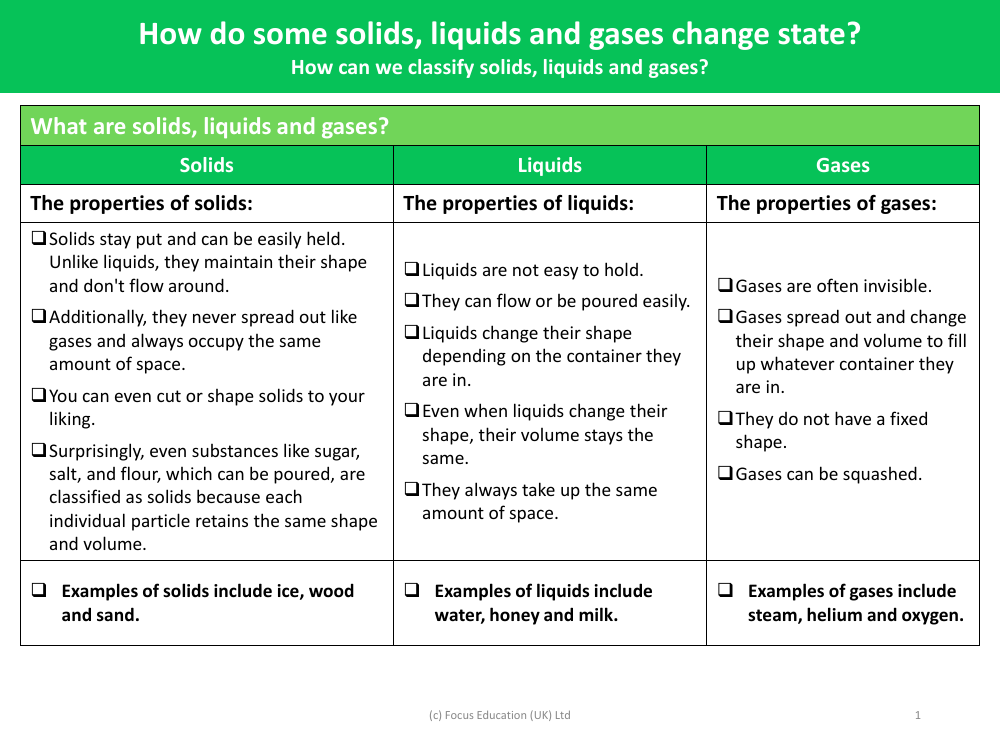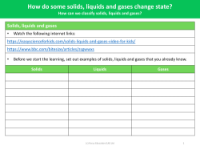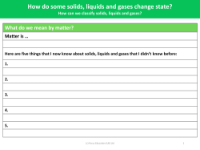What are solids, liquids and gasses? - State of Matter - Year 4

Science Resource Description
Solids, liquids, and gases are the three fundamental states of matter, each with distinct characteristics that set them apart. Solids are known for their stability; they can be easily held, maintain their shape without flowing, and occupy a consistent volume of space. This means that unlike liquids or gases, solids do not change their shape to fit their container, and they do not spread out to fill the entire space available to them. Solids can be manipulated by cutting or shaping, and interestingly, even pourable substances like sugar, salt, and flour are considered solids because the particles retain their shape and volume.
Liquids, in contrast, cannot be held easily because they flow and take on the shape of their container, although their volume remains unchanged. They adapt to the space they are placed in but always occupy the same amount of space. Gases are often invisible and are the most adaptable of the three states; they expand to fill their container, changing both shape and volume. Unlike solids and liquids, gases can be compressed, which means their volume can be reduced under pressure. Examples of these states of matter include ice, wood, and sand for solids; water, honey, and milk for liquids; and steam, helium, and oxygen for gases. Understanding the properties of solids, liquids, and gases is crucial for classifying substances and studying how they can change from one state to another under different conditions.





